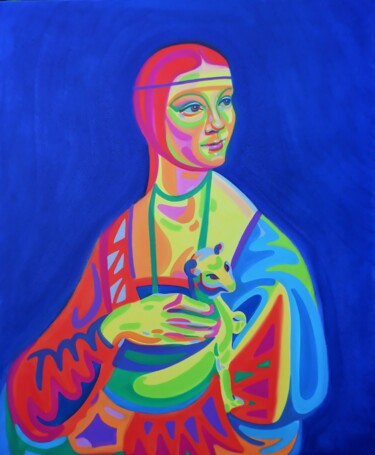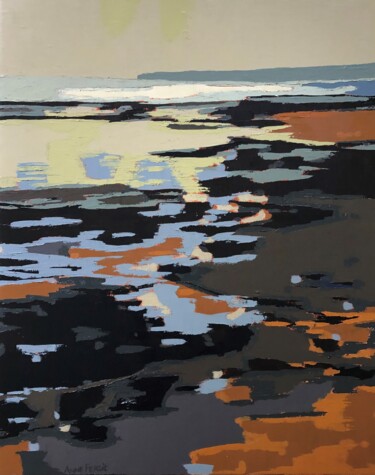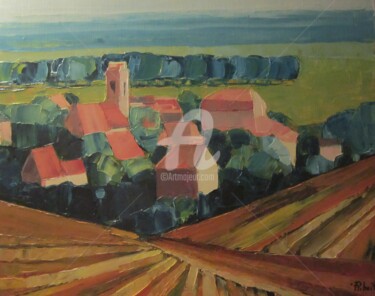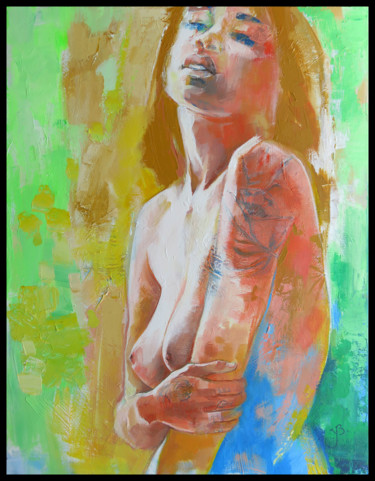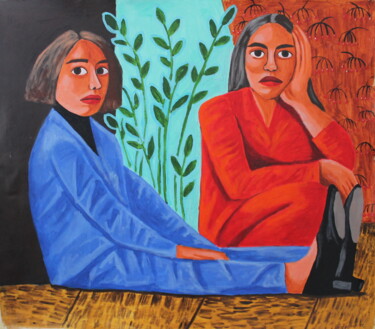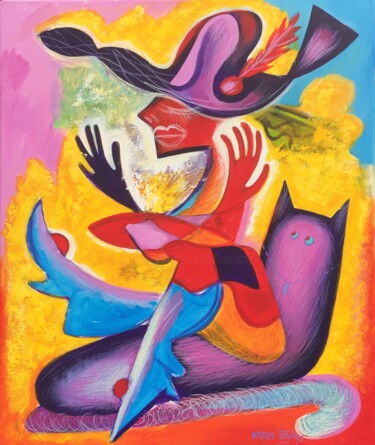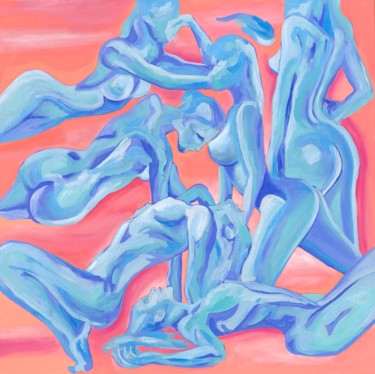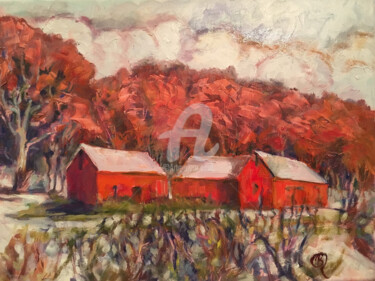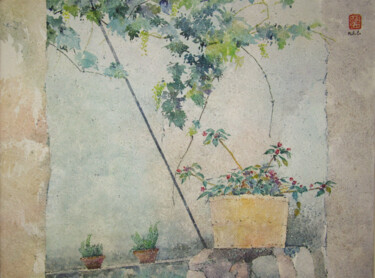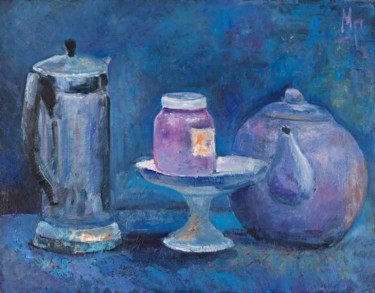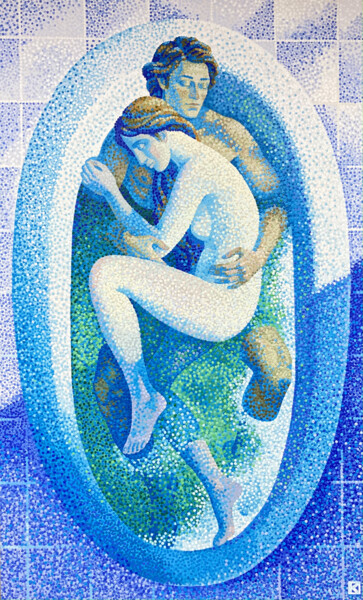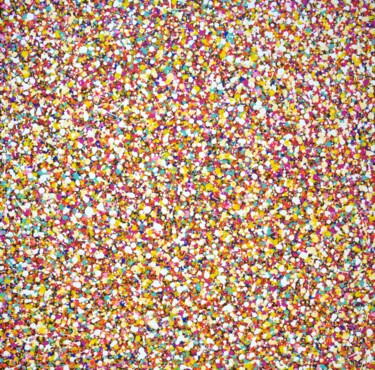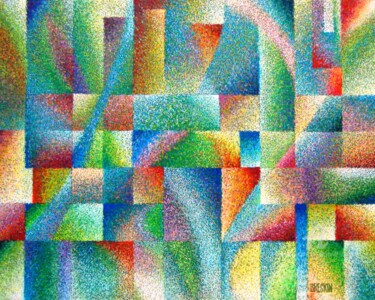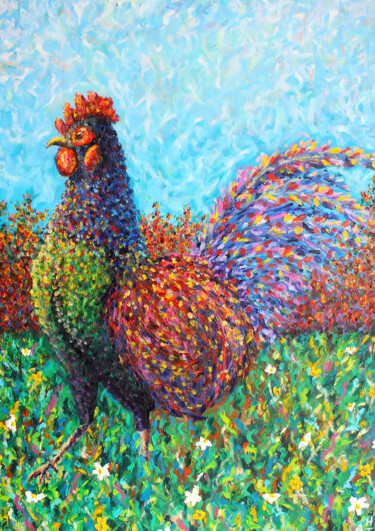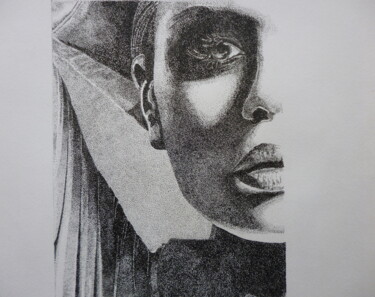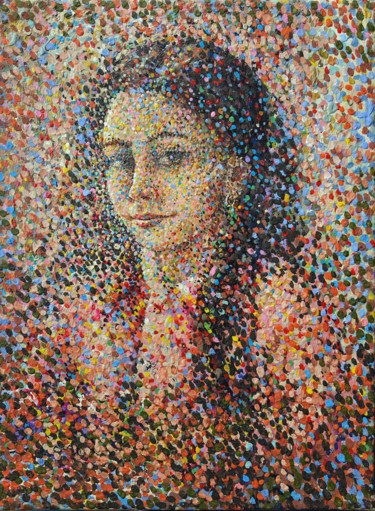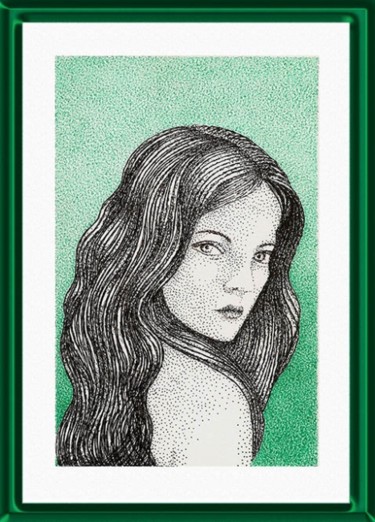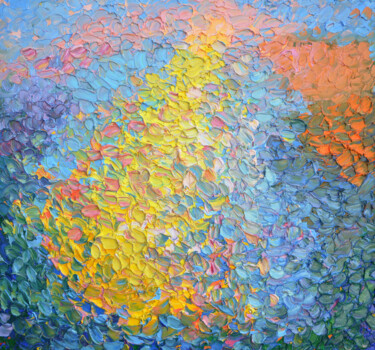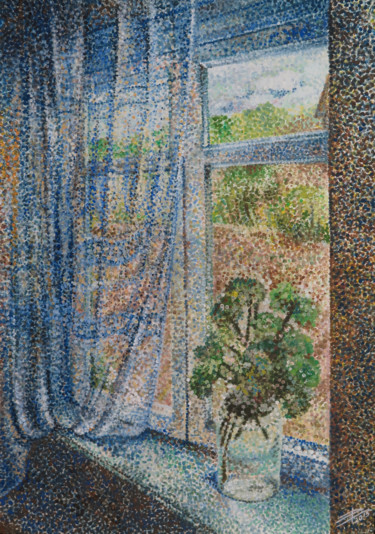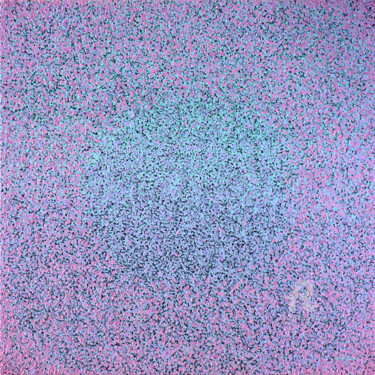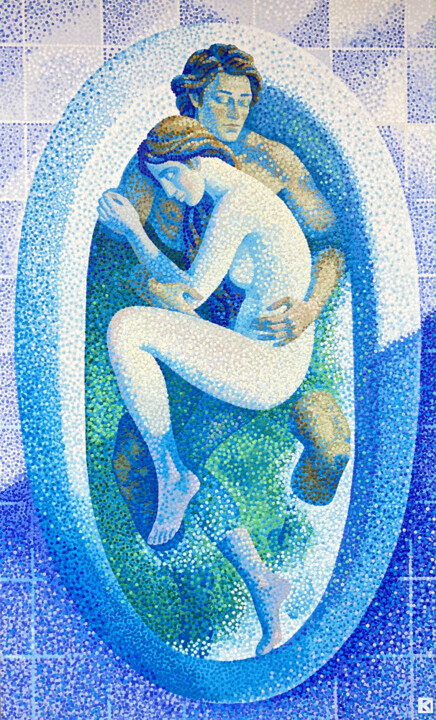 Kristina Korobeynikova, The fusion, 2022. Acrylic on linen canvas, 180 x 110 cm.
Kristina Korobeynikova, The fusion, 2022. Acrylic on linen canvas, 180 x 110 cm.
Pointillism as told by Georges Seurat
"The inability of some critics to connect the dots does not make pointillism useless."
The words of the pioneer of pointillism Georges Seurat, probably born in a "defensive" context of the artistic peculiarities of the late 19th century technique, perfectly summarize its peculiarities, highlighting the way colors are broken down into small dots as a distinctive element to be traced back to the Neo-Impressionist movement. In order to understand the actual contribution of pointillism within the art world, however, it is necessary to delve into the matter, making the aforementioned painter speak through his work, in particular, by analyzing the painting The Circus, dated 1891 and kept at the Musée d'Orsay in Paris. This "circus" masterpiece, identified as one of the greatest pointillist researches, immortalizes a theme dear to the art world of the 1880s, also investigated by such masters as Renoir, Degas and Toulouse-Lautrec. In addition, the canvas is part of a series, which, including the works Circus Sideshow (1888) and The Can-can (1889-1890), pursues the aim of "documenting" the nocturnal entertainment activities of Paris at the time.
 Georges Seurat, The Circus, 1891. Oil on canvas, 185.5 x 152, 2 cm. Paris: Musée d'Orsay
Georges Seurat, The Circus, 1891. Oil on canvas, 185.5 x 152, 2 cm. Paris: Musée d'Orsay
About the composition of the 1891 masterpiece, the work depicts the interior of a circus, where a rich and dynamic show is taking place, animated by multiple presences, such as: a clown, who, captured in the foreground from behind, is probably directing his gaze toward his colleagues; a horsewoman intent on balancing on a running horse, portrayed in the most central part of the painting; a trainer, who, focused on directing the running of the aforementioned animal, finds placement in the right part of the canvas; and two clowns caught in the execution of a peculiar and reckless circus act, taking place in the far end of the arena. To observ this colorful, lively and imaginative scene we find an orderly crowd of spectators, arranged on high tiers in which more or less elegant characters stand out, accompanied by the performance of an orchestra placed in the upper end of the work. Despite this careful arrangement of the characters, the main intent of Seurat's canvas is to evoke the most authentic spirit of the circus show, reconstructed through a skillful juxtaposition of the colors red, yellow, orange and blue, which, enriched by the white of pure light, make the atmosphere authentic, intense, engaging, bright and harmonious. Finally, it is important to emphasize how this sought-after chromaticism is accompanied, enhanced and enriched by the very peculiarities of the pointillism technique, in respect of which the painting was applied on the support by means of the creation of dots of pure color juxtaposed with each other, which, studied in their chromatic arrangement, are perceived by the viewer as if they had been canonically mixed.
 Frédéric Durieu & Nathalie Erin, Marilyn with butterflies, 2016. 2D digital work on metal, 40 x 40 cm.
Frédéric Durieu & Nathalie Erin, Marilyn with butterflies, 2016. 2D digital work on metal, 40 x 40 cm.
 Mariana Prochkaruk, Brown-blue, 2020. Oil on linen canvas, 160 x 90 cm.
Mariana Prochkaruk, Brown-blue, 2020. Oil on linen canvas, 160 x 90 cm.
Curiosity: what is the difference between French pointillism and Italian divisionism?
The aforementioned peculiarities of pointillism are the fruit of the positivist climate of the late 19th century, which, indelibly marked by the prevailing idea of the triumph of progress, as well as the extreme faith in technique and science, came to charge with rationality even the art world, previously dominated by the "romanticism" of the Impressionists. Indeed, Seurat's very aforementioned stylistic features represent the artistic interpretation of some fundamental scientific discoveries, which, occurring in the field of optics in those years, are inextricably linked to the research of French chemist Michel Eugène Chevreul and American physicist Nicholas Ogden Rood. In detail, the former of these discovered that two juxtaposed, slightly overlapping or very close, hues have the effect of another color when perceived by the human eye from a certain distance (principle of "simultaneous contrast"). In addition, the French chemist also noted, that by juxtaposing two complementary shades, the aura of one strengthens that of the other, mutually increasing their brightness. Speaking of Nicholas Ogden Rood, his research can be summed up with such a revelation: the juxtaposition of primary hues creates a more intense, luminous and pleasing color than is achieved by directly mixing pigments. Consequently, the pointillist painter, referring to the aforementioned studies, tends to juxtapose complementary hues, arranging them as dots of pure color on the canvas, which will later be "interpreted" by the observer, through "optical mixing." Regarding divisionism, on the other hand, this pictorial movement, which developed in Italy beginning in the last decade of the 19th century, taking partial technical cues from French pointillism, derives mainly from the Scapigliatura Lombarda current and Decadentism. In fact, in divisionism the small neo-expressionist dots become filamentous, minute and vibrant brushstrokes of pure color, which, interacting with each other in an optical sense, are intended to become spokesmen for intense symbolic, religious, political and social meanings, having the role of giving life to an ideal of salvation attainable through art.
 Van Lanigh, Sparkles of joy, 2022. Sculpture, polymer clay / resin on canvas, 30 x 24 x 8 cm / 4.00 kg
Van Lanigh, Sparkles of joy, 2022. Sculpture, polymer clay / resin on canvas, 30 x 24 x 8 cm / 4.00 kg
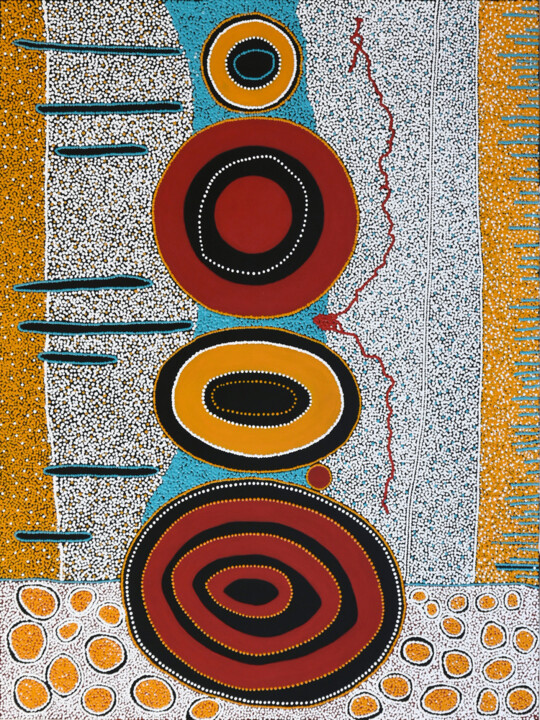 Françoise Suzanne, Series on the track - tracks in African lands n°11, 2022. Acrylic on cardboard, 80 x 60 cm.
Françoise Suzanne, Series on the track - tracks in African lands n°11, 2022. Acrylic on cardboard, 80 x 60 cm.
Pointillism in the works of Artmajeur artists
The narrative of pointillism, despite reaching its peak in the late 19th century, continues in contemporary art, where many of its concepts, ideas, and viewpoints follow up to take shape through the work of popular artists such as, for example, Miguel Endara, Ana Enshina, Kyle Leonard (K.A.L), Philip Karberg, Herb Williams, Jihyun Park, and the well-known Yayoi Kusama. Such "revival" also goes on through the work of Artmajeur artists, as evidenced by the art of Dent-De-Lion Du Midi, Sophie Artinian, and A-Criticart
 Dent-De-Lion Du Midi, Monday | Seurat | Reimagine art, 2021. Digital painting on paper, 90 x 127 cm.
Dent-De-Lion Du Midi, Monday | Seurat | Reimagine art, 2021. Digital painting on paper, 90 x 127 cm.
Dent-De-Lion Du Midi: Monday | Seurat | Reimagine art
Just as suggested by the work's very title, Monday | Seurat | Reimagine art represents an "early week" remake of A Sunday Afternoon on the Island of La Grande Jatte, Georges Seurat's "crowded" masterpiece, which, dated between 1884 and 1886, is preserved at the Art institute of Chicago. Speaking of the latter painting, it perfectly sums up the customs and habits of Industrial Revolution-era Paris, when, with the emergence of wage and factory labor, both leisure time as social time and the juxtaposition of the times and places of work with the times and places of everyday life became established. In fact, in the Sunday atmosphere that the French master captured in a park on the banks of the Seine, one "breathes in" that authentic mood of the rest day, which, in this case, is expressed through the relaxed attitudes of women strolling around sheltering themselves with pretty little umbrellas, of rowers resting after competition, of children playing composedly, of the addmesticated monkey on a leash, etc. Monday | Seurat | Reimagine art, on the other hand, allows us to get to know what the same place would look like during a Monday afternoon, set in the time frame of both the nineteenth century and contemporary times, as, despite the passage of centuries, many aspects unite today's life with that of the greatest masters of all time.
 Sophie Artinian, Eternity, 2017. Oil on linen canvas, 60 x 60 cm.
Sophie Artinian, Eternity, 2017. Oil on linen canvas, 60 x 60 cm.
Sophie Artinian: Eternity
In Eternity, an oil painting by Sophie Artinian, pointillism meets abstractionism, creating a "symphony" of colors that almost makes us imagine we are catching a glimpse of the silhouette of some mountains, which, ideally placed in the lower half of the work, take on the darker hues of the canvas. In addition, precisely the aforementioned chromaticism, characterized by the triumph of shades of purple, pink, blue and light blue, makes the painting akin to a well-known masterpiece made with similar hues and the same technique, namely The Beach at Ambleteuse at Low Tide (1900) by Theo van Rysselberghe. The latter work is part of a series of seascapes created by the Belgian artist in Ambleteuse, France, which, having for subject the same view, capture its variations in light, tide and sea movements. Finally, just like Eternity, the 1900 masterpiece turns out to be divided into "bands" of light, i.e., more or less bright areas, built from individual patches of pure color similar to a mosaic.
![]() A-Criticart, Pixel Jordan, 2019. Drawing, conté / ballpoint pen / pencil on paper, 75 x 55 cm.
A-Criticart, Pixel Jordan, 2019. Drawing, conté / ballpoint pen / pencil on paper, 75 x 55 cm.
A-Criticart: Pixel Jordan
Contemplation of Pixel Jordan invites the formulation of a revealing thought: pixel art represents, in a sense, the most widespread and current form of "pointillism." In fact, pixel art, carefully simulated by A-Criticart's drawing, is a form of digital art that, born in the 1980s from the spread of coin-ops and video games, constructs images by deliberately controlling the position of pixels, or those small compositional units of color in the entire work. Thus, although pixels may appear to be the result of a recent development, they are actually the modern application of the same nineteenth-century theories underlying pointillism. Consequently, A-Criticart's Micheal Jordan may represent a kind of recent interpretation of the "pointillist" portrait, which, among its major masterpieces, boasts such works as Seurat's Seated Model, in Profile, Study for The Models (1887), Seurat's Young Woman Powdering Herself (1890), and Pissarro's Young Peasant at Her Toilette (1888). Finally, to the figurative research enacted by the latter works, the artist's drawing of Artmajeur adds a challenge, as the "low definition" of the image is intended to test the interpretive capacity of the human brain.


 Olimpia Gaia Martinelli
Olimpia Gaia Martinelli
